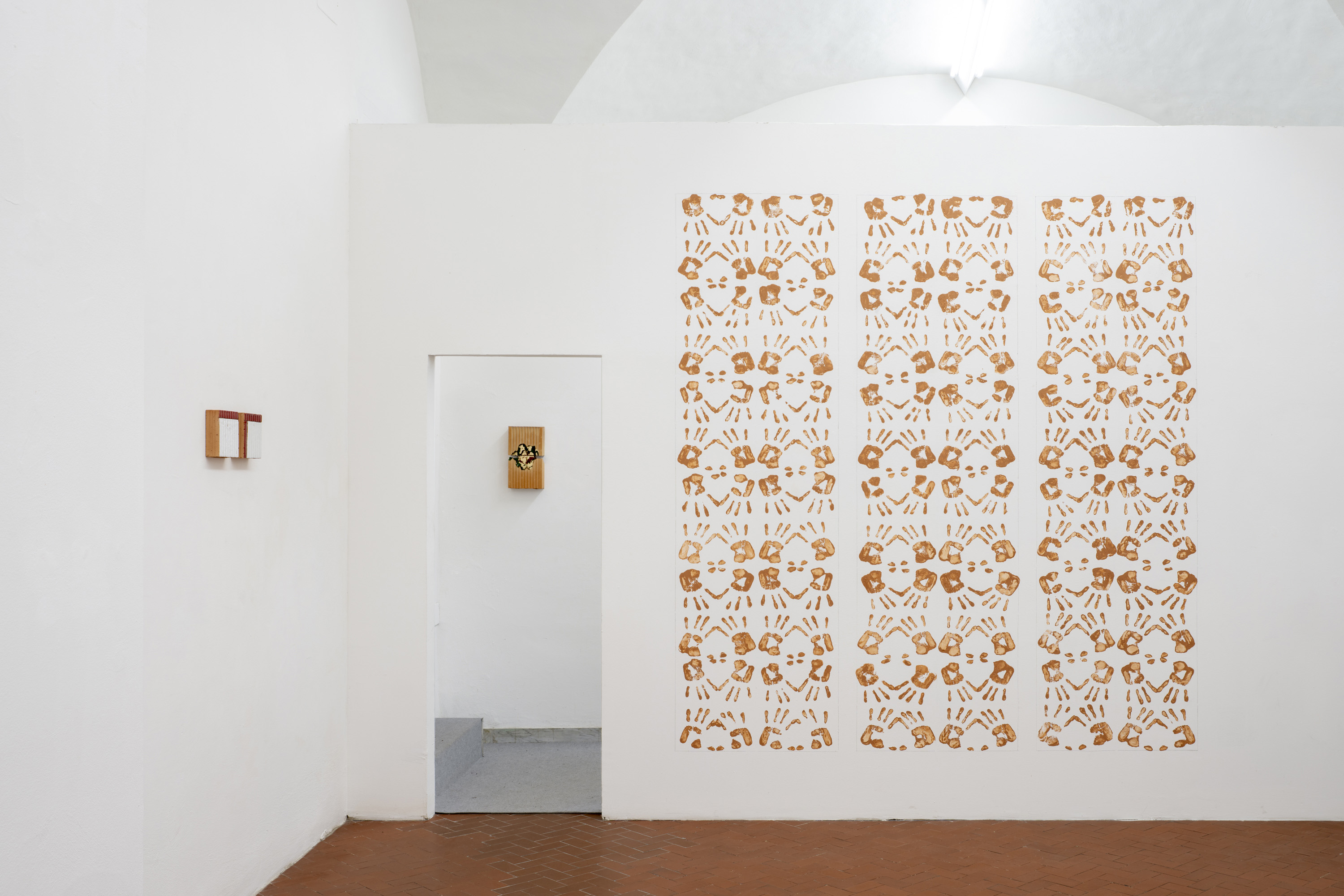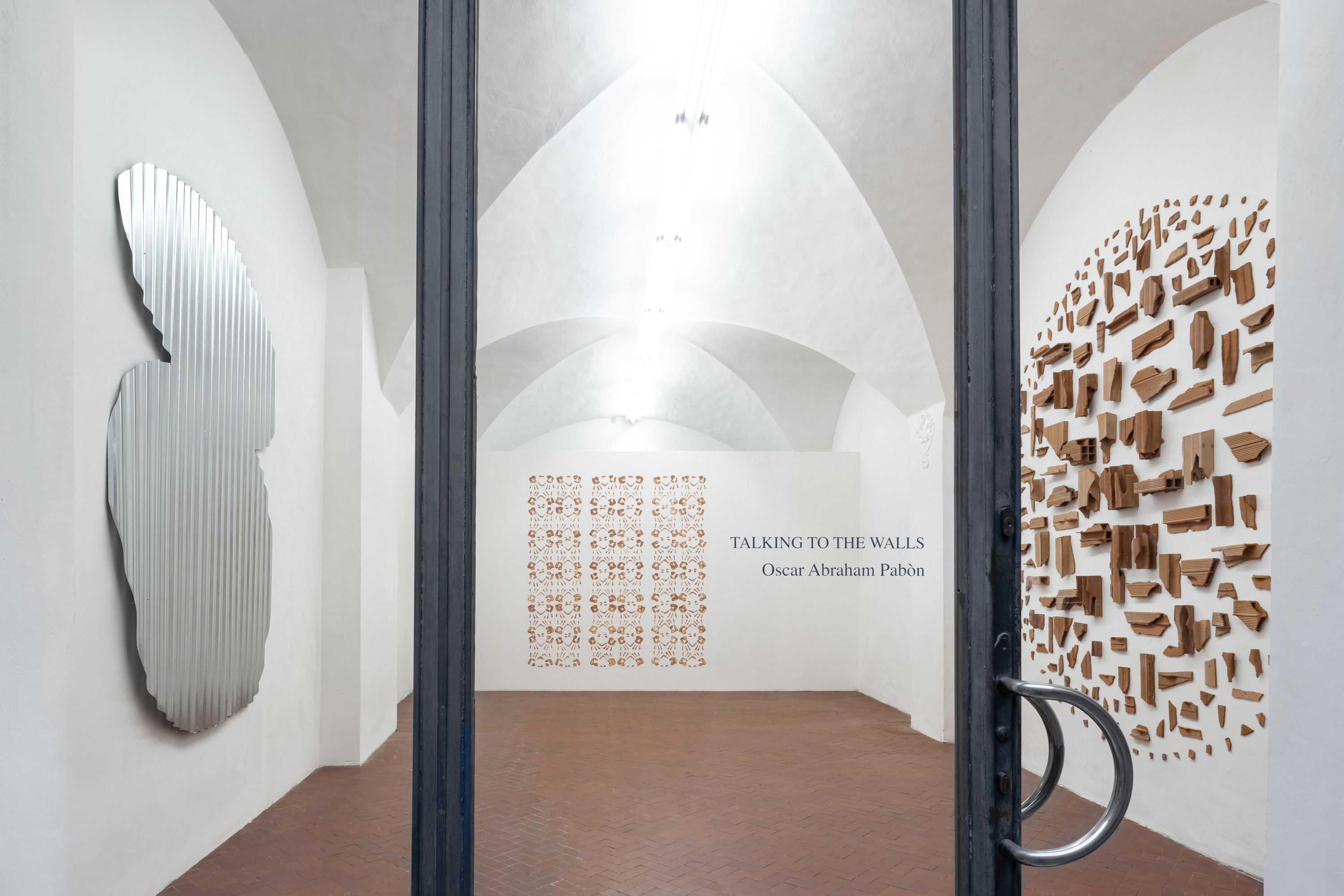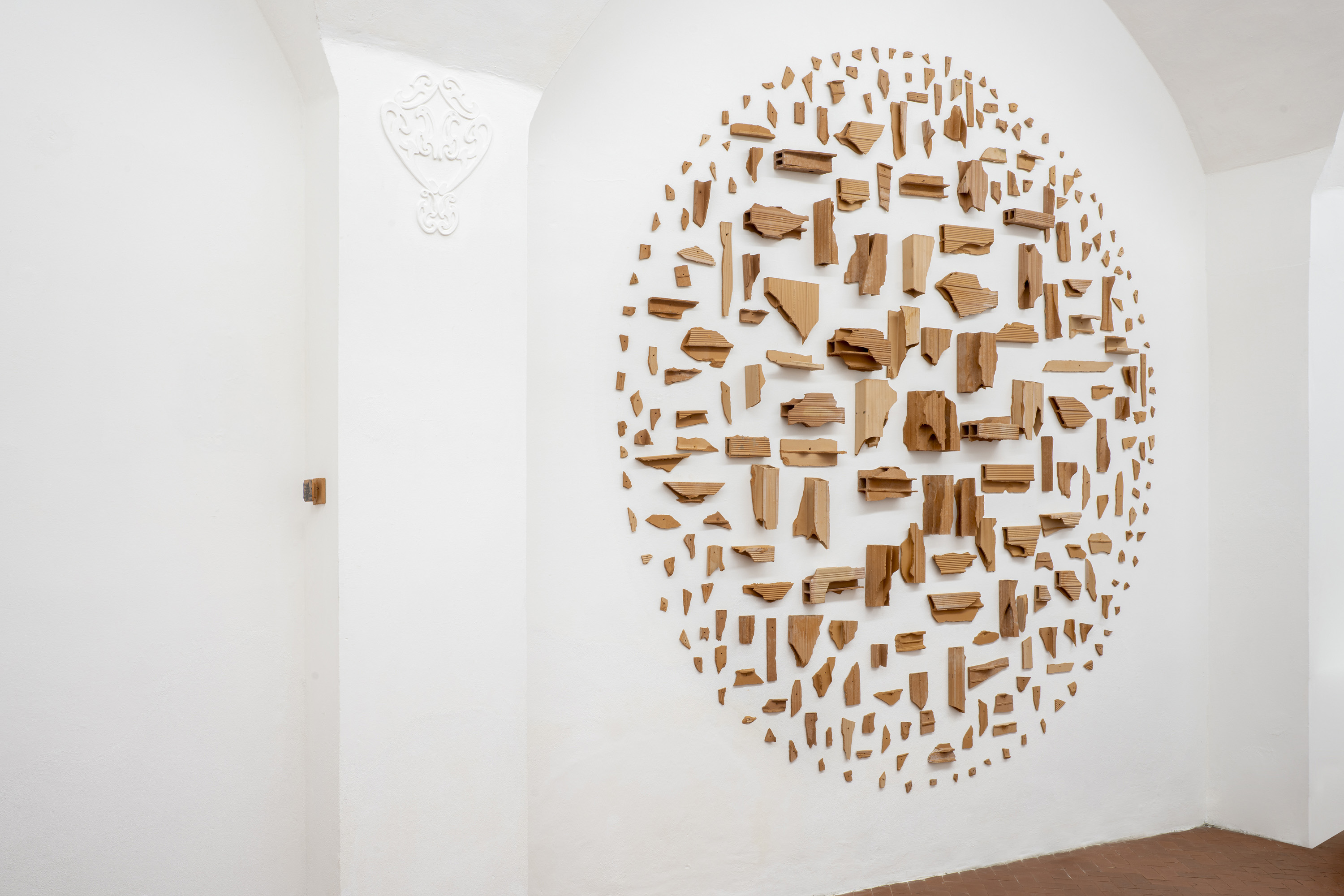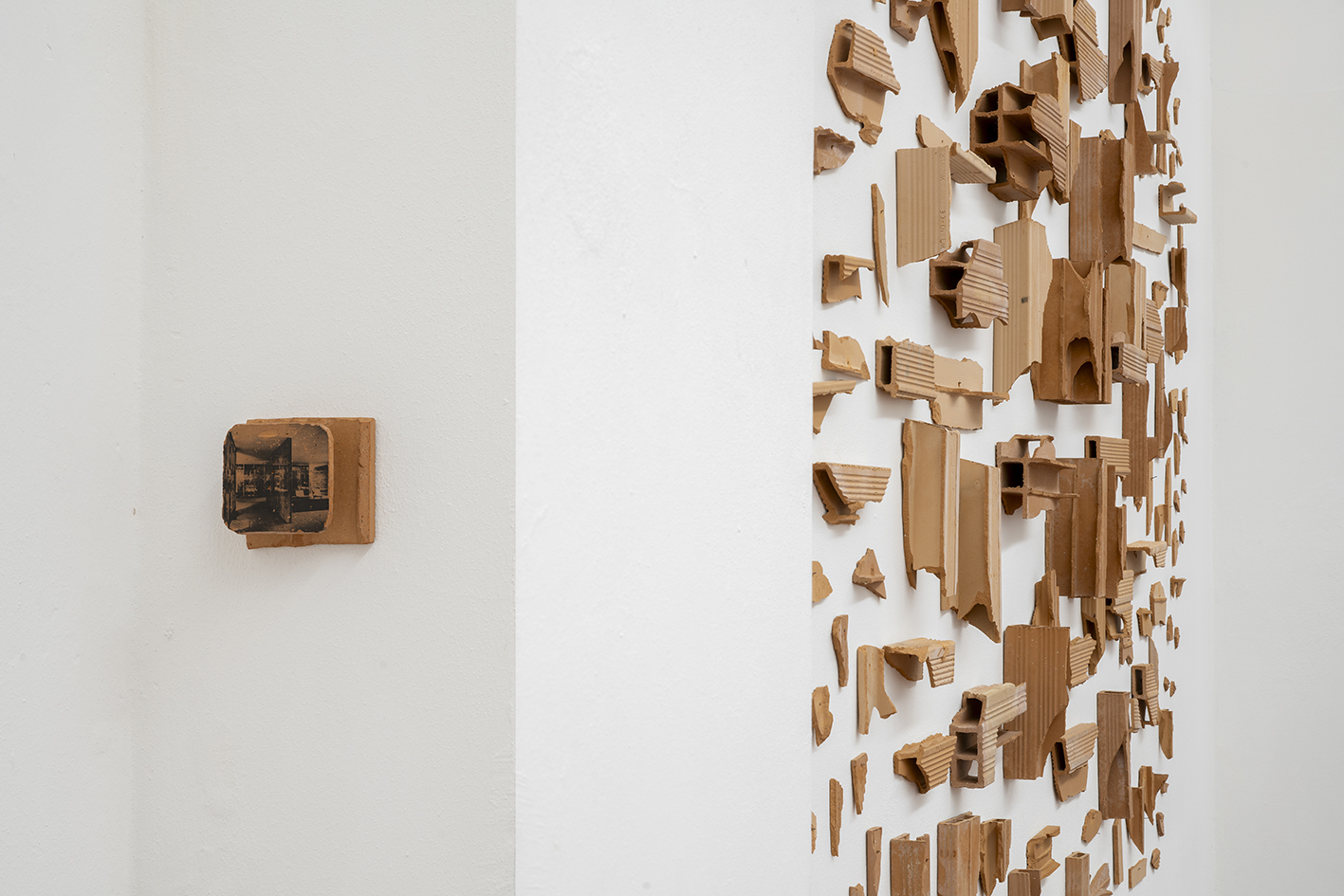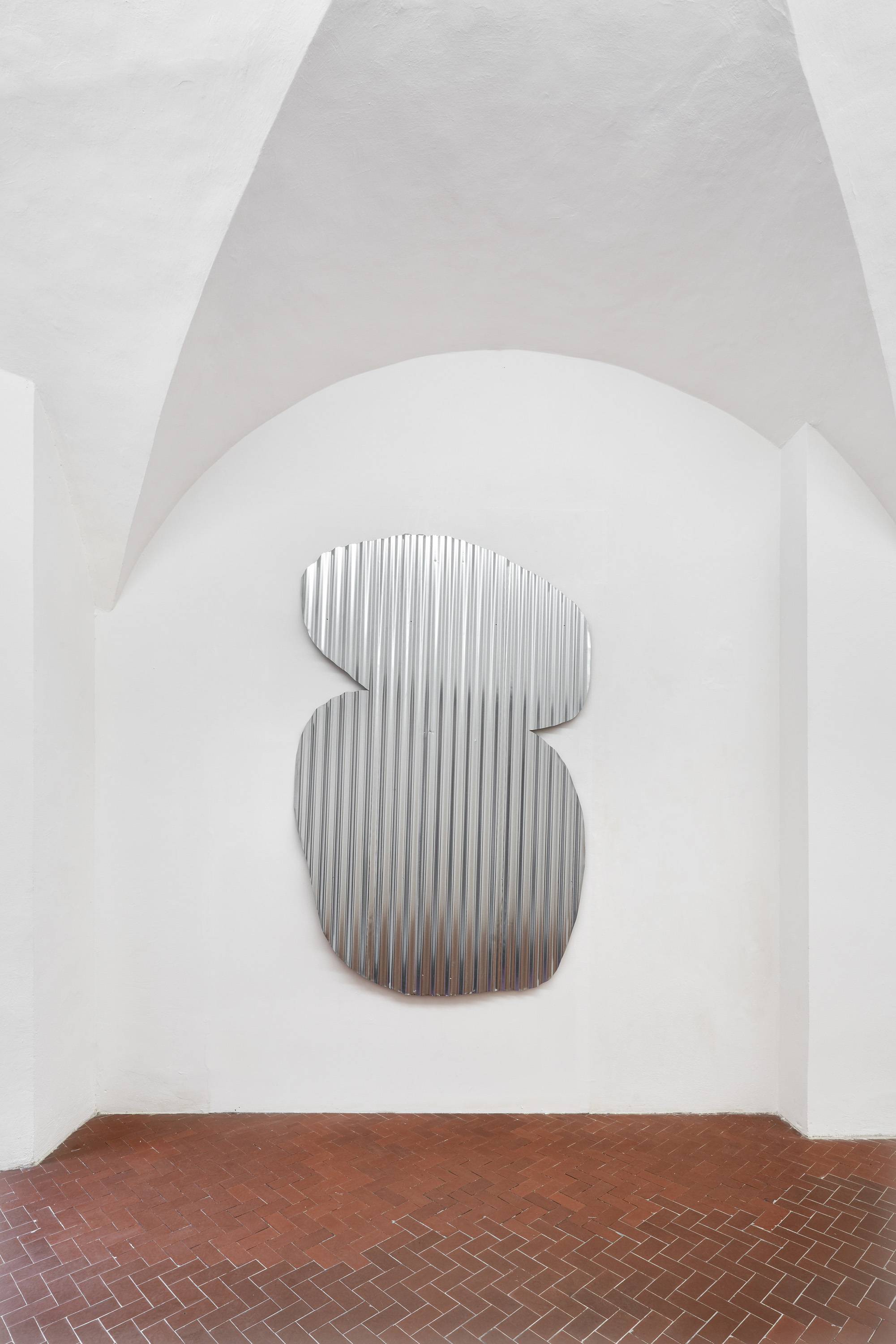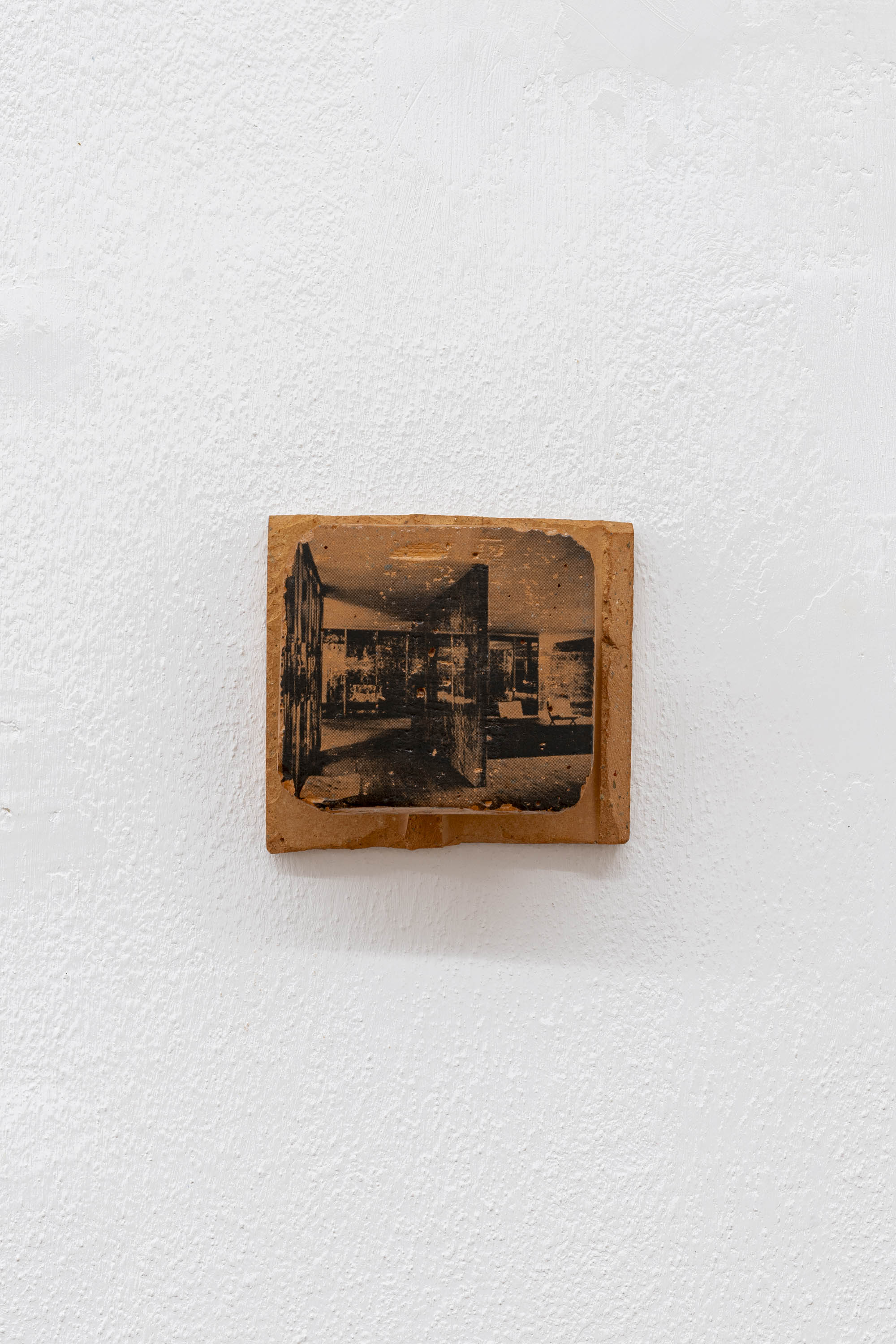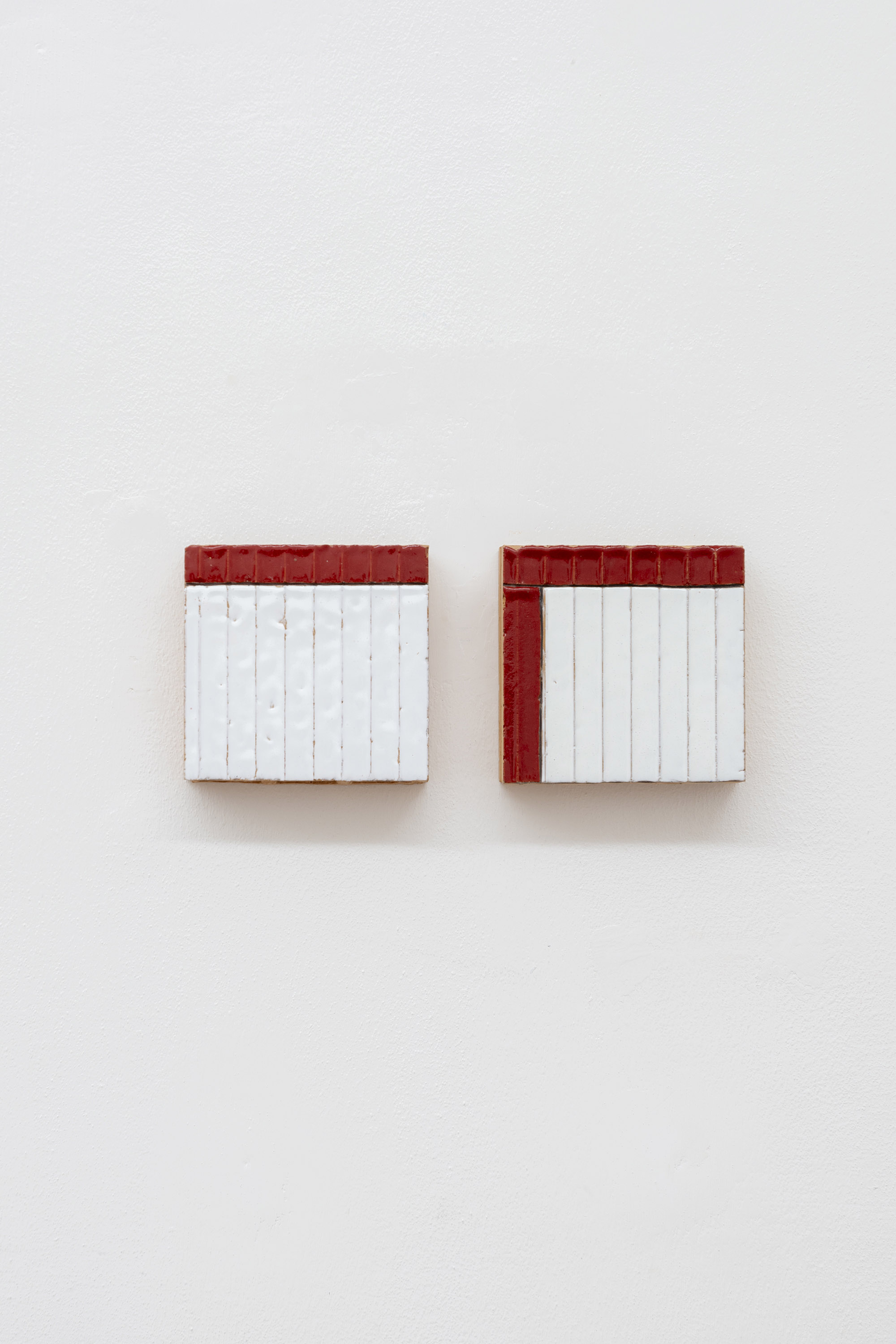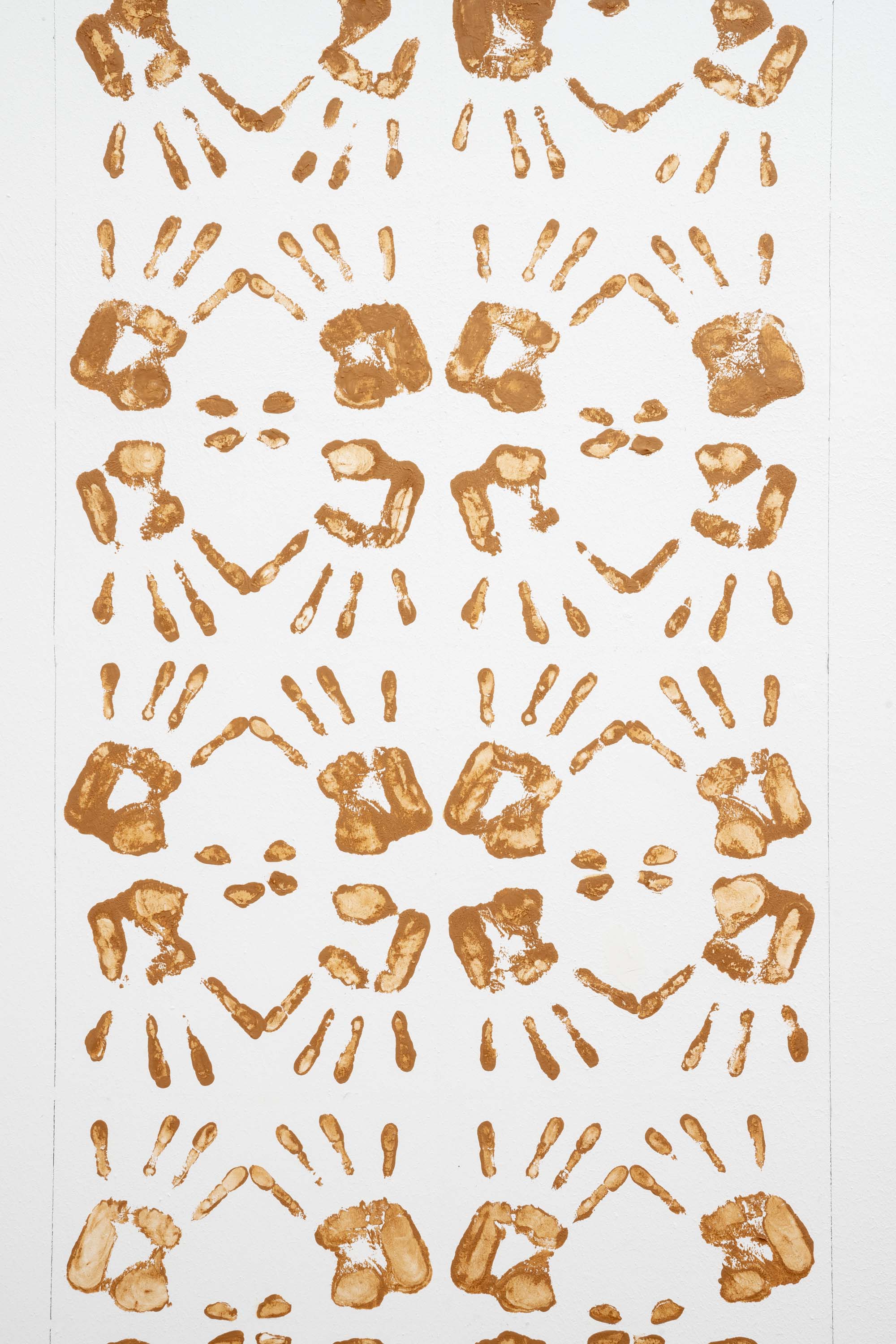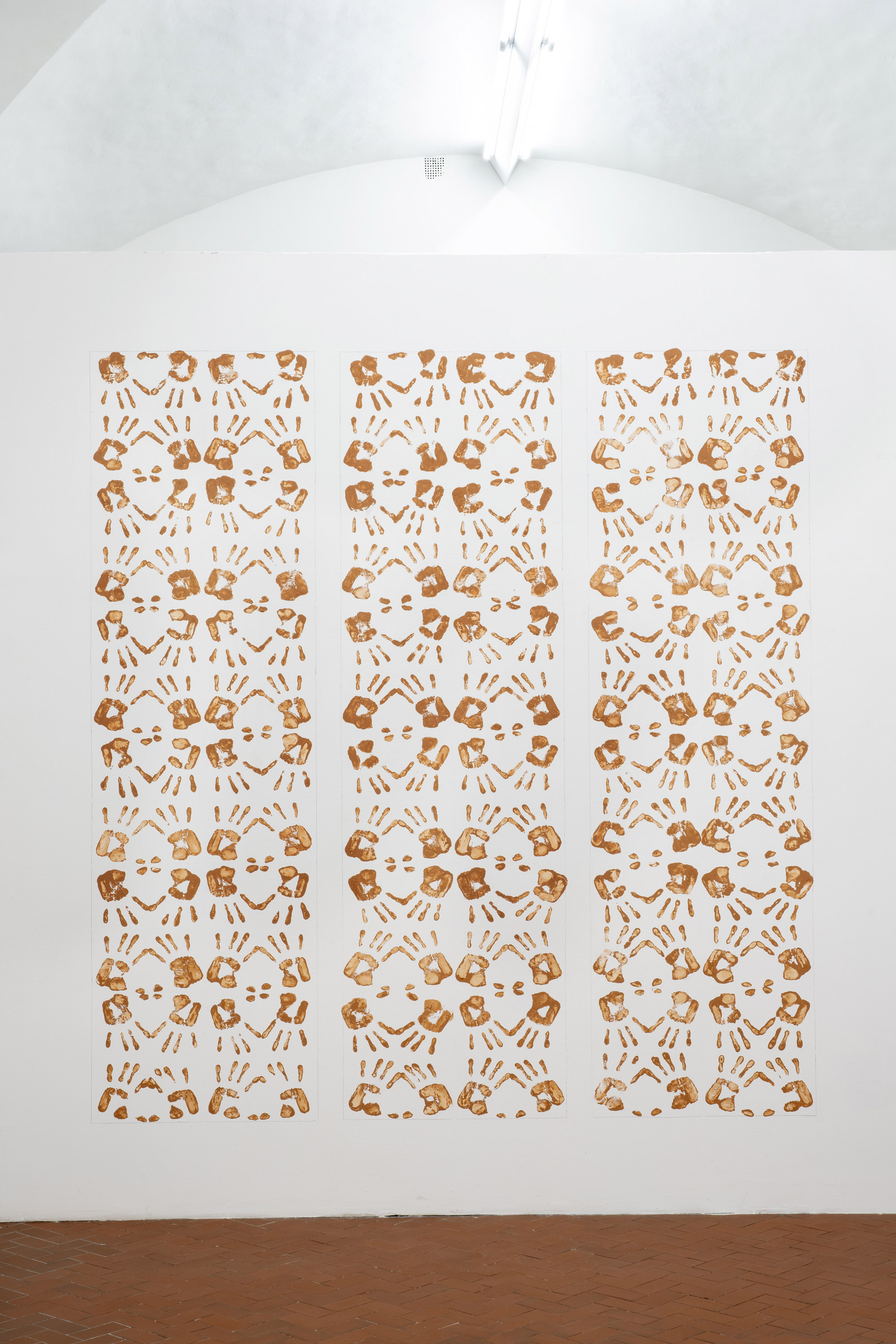Bora Baboci, João Freitas, Enej Gala, Albano Hernandez, Mehdi-Georges Lahlou, Mirthe Klück, Leonardo Meoni, Giovanni Oberti, Oscar Abraham Pabón, Eugenia Vanni, Xiao Zhiyu, Francesco Carone
Bora Baboci, Adam Bilardi, Enej Gala, Cecilia Granara, Julien Monnerie, Jessy Razafimandimby, Ambra Viviani
Giulio Delvè, João Freitas, Mirthe Klück, Marco Andrea Magni, Giovanni Oberti, Oscar Abraham Pabón, Namasal Siedlecki, Jamie Sneider, Eugenia Vanni, Xiao Zhiyu
João Freitas, Mirthe Klück, Marco Andrea Magni, Oscar Abraham Pabón, Eugenia Vanni
Mirthe Klück, Marco Andrea Magni, Eugenia Vanni, Serena Vestrucci
Sara Enrico, Helena Hladilovà, Pietro Manzo, Giovanni Oberti
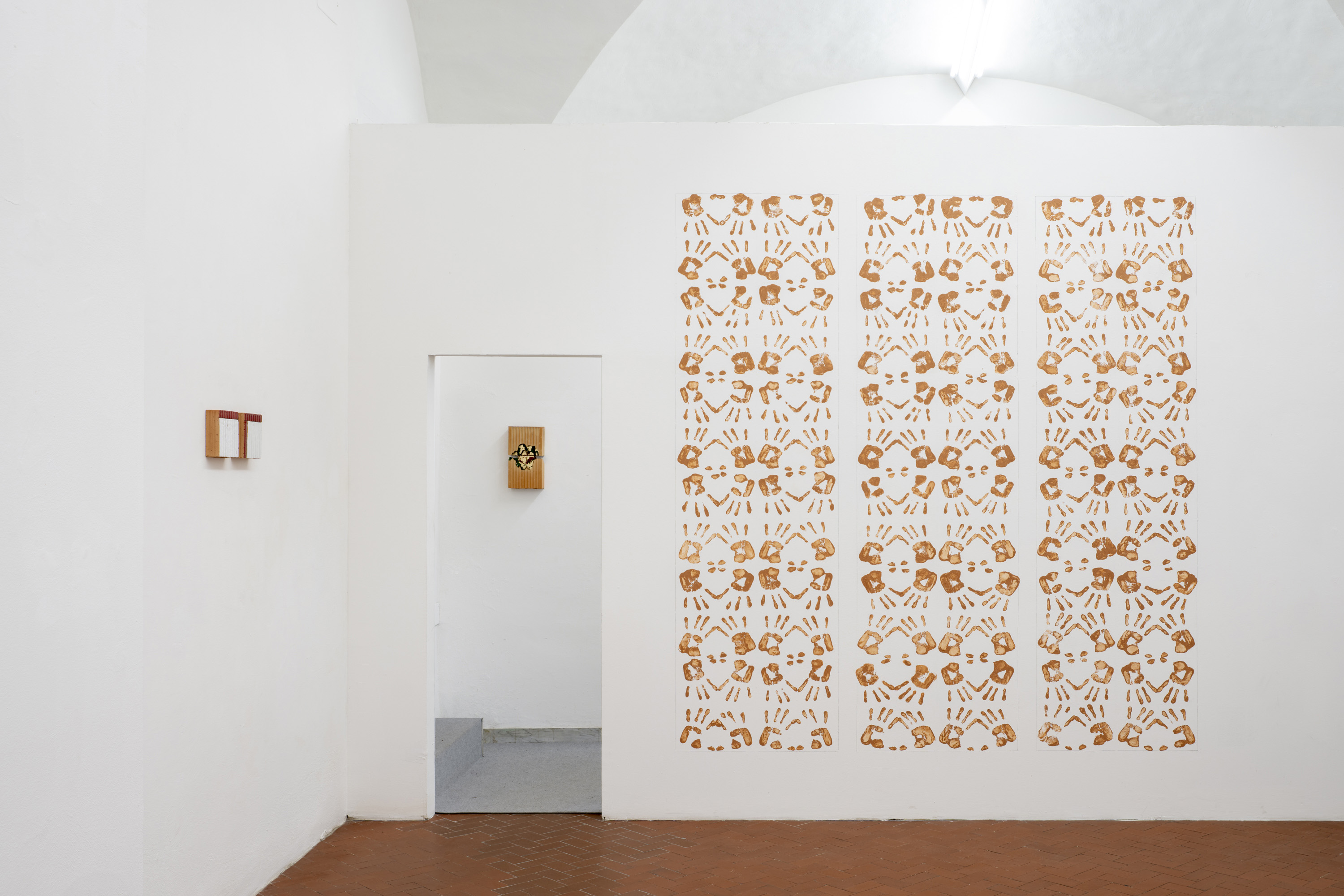
Talking to the Walls is the second episode in a trilogy of shows that began with a show entitled Talking to the Plants at the Martin van Zomeren gallery in Rotterdam. Together, the series of shows investigate the cultural aspects that define art in terms of its origins and effects.
The exhibition’s title comes from a cycle of conferences held by Jacques Lacan (1901-1982) in the chapel of the Sainte-Anne hospital in Paris, between 1971 and 1972, at which his words were addressed to the walls alone, and for his ears only. Similarly, for this Venezuelan artist the relationship with place stimulates a reflection involving a number of central points in the aesthetic debate, and thus speaking to the walls means questioning what we call art and culture. The white spaces of the gallery, and its architectural layout itself, in a sense determine the conditions and the expressive possibilities of the work, and of the artistic process, the extremes of which range from the decorative instinct, and the expression of self-awareness that is found even in prehistoric man, to a completeness devoid of ornament, a concrete manifestation of an awareness of time.
Oscar Pabón’s works on show at Galleria FuoriCampo operate on the borderline of this ambidrome, alternating site-specific interventions created with patterns that result in a sort of frieze, but having a powerful conceptual impact, with works that highlight the characteristics of the material, the aesthetic content of which is located entirely within the structure that becomes form, and vice versa.
